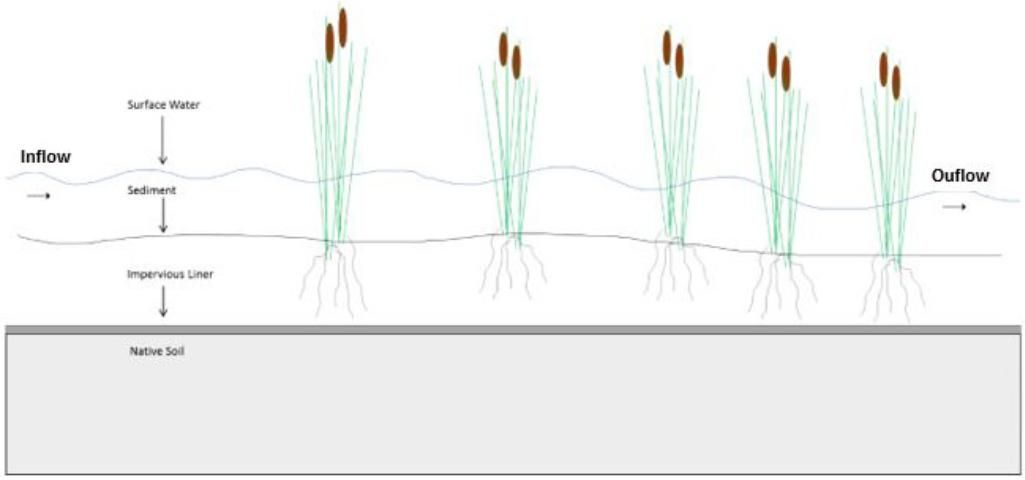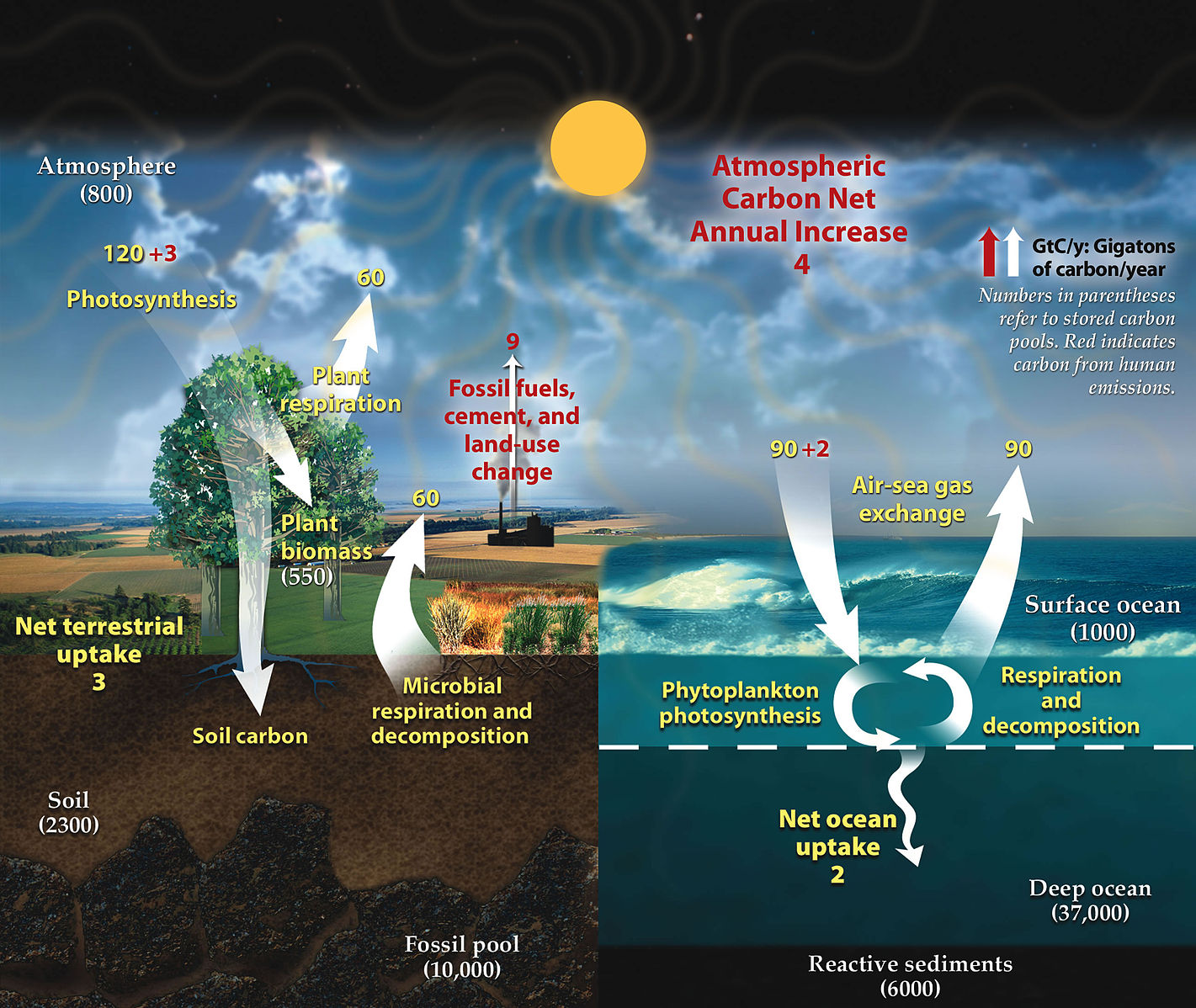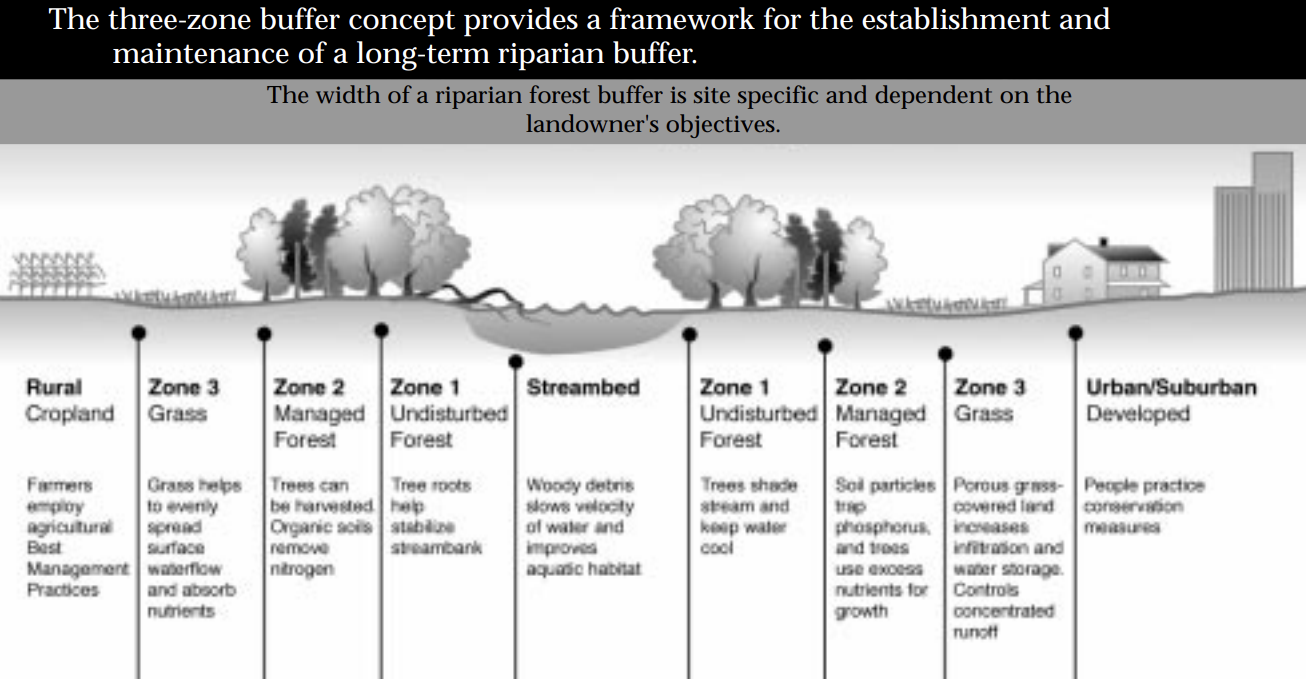IB Syllabus focus:
‘Ecosystems replenish water, reduce floods and erosion, mitigate pollution, and sequester carbon—supporting human well-being and other life.’
Ecosystem services are the essential benefits people derive from natural systems. They sustain human well-being by maintaining life-supporting functions that underpin societies and other living organisms.
Understanding Ecosystem Services
Ecosystem services are the direct and indirect contributions ecosystems provide to humans, ranging from basic survival needs to broader cultural and spiritual enrichment.
Ecosystem Services: The benefits humans gain from ecosystems, including goods (like food and timber) and processes (such as climate regulation and water purification).
These services are fundamental for both ecological balance and human societies, enabling sustainable resource use and resilience against environmental challenges.
Categories of Ecosystem Services
Ecosystem services are usually classified into four categories:
Provisioning services: Tangible goods such as food, water, timber, and fibre.
Regulating services: Functions that regulate natural processes, like climate control, flood prevention, and disease regulation.
Supporting services: Processes such as soil formation, nutrient cycling, and primary production that make other services possible.
Cultural services: Non-material benefits including recreation, aesthetic enjoyment, spiritual value, and cultural identity.
Water Replenishment and Flood Control
Natural ecosystems, particularly forests and wetlands, play critical roles in water management.
Replenishment of freshwater supplies: Through infiltration and aquifer recharge, ecosystems ensure continuous availability of clean water.
Flood reduction: Wetlands, mangroves, and riparian zones absorb and store excess rainfall, releasing it slowly to reduce flooding intensity.
Erosion control: Vegetation stabilises soil, preventing erosion and the loss of fertile land.
Flood Regulation: The ability of ecosystems to absorb and store excess water, reducing the frequency and severity of flooding events.
Without these natural mechanisms, human-built infrastructure would face greater stress and higher costs for water management.
Pollution Mitigation
Ecosystems act as natural filters that reduce pollution levels.
Forests absorb airborne pollutants, improving air quality.
Wetlands trap sediments, excess nutrients, and contaminants, purifying water supplies.
Microorganisms in soil and aquatic systems break down pollutants, mitigating harmful effects.
These functions protect both environmental health and human populations, reducing the burden on artificial waste management systems.
Wetlands mitigate pollution by slowing flows, allowing particles to settle, and enabling microbial and plant uptake to transform or remove contaminants.

Diagram of a free-water surface flow wetland showing inlet, shallow vegetated cells and outlet. Use to illustrate how hydraulic residence time, vegetation and sediments facilitate contaminant removal (e.g., particulates, nutrients, some metals and organics). This schematic includes engineering detail beyond the syllabus, but supports the core pollution-mitigation processes. Source.
Carbon Sequestration and Climate Regulation
Carbon sequestration is a crucial regulating service provided by forests, oceans, and soils.
Carbon Sequestration: The long-term storage of carbon in plants, soils, oceans, and geological formations, reducing the concentration of carbon dioxide in the atmosphere.
Forests and peatlands absorb atmospheric carbon dioxide during photosynthesis, storing it in biomass and soil.
Oceans function as massive carbon sinks, storing large amounts of dissolved carbon.
Grasslands and agricultural soils can also capture and retain carbon when sustainably managed.
Ecosystems sequester carbon by storing it in living biomass and soils, moderating atmospheric CO₂ and climate.

A labelled diagram of the global carbon cycle indicating exchanges between atmosphere, vegetation, soils, oceans and geologic reservoirs. Use it to anchor the concept of carbon sequestration as a regulating service provided by terrestrial and marine ecosystems. Values are illustrative at global scale. Source.
Supporting Human Well-being
Ecosystem services underpin human health, economic security, and social stability.
Clean water and air reduce disease risks.
Food provision ensures survival and economic livelihoods.
Regulated climates and reduced disaster impacts foster societal resilience.
Cultural and recreational benefits enhance quality of life.
Human Well-being = (Health + Security + Good Social Relations + Freedom of Choice)
Health = Access to clean water, food, and disease regulation
Security = Stable resources, disaster protection
Good Social Relations = Cultural identity, cohesion
Freedom of Choice = Sustainable access to natural capital
Ecosystem services sustain not just individuals, but also collective societies across local, regional, and global scales.
Ecosystem Services and Sustainability
To maintain human well-being, ecosystems must remain functional. Overexploitation, deforestation, pollution, and climate change threaten their ability to provide services. Sustainable management requires:
Harvesting resources below regeneration limits.
Protecting habitats that regulate water, carbon, and nutrient cycles.
Investing in conservation and restoration projects to safeguard long-term ecosystem functions.
Recognising and valuing ecosystem services in economic and political decision-making.
Interconnectedness of Services
Ecosystem services are interlinked, with the loss of one service often affecting others. For example:
Deforestation reduces carbon sequestration, increases flood risk, and degrades water quality simultaneously.
Wetland destruction removes flood control, water purification, and biodiversity support.
Overfishing damages marine food webs, reducing provisioning services and cultural values linked to fishing communities.
Understanding these connections is critical for integrated environmental management.
Riparian buffers slow overland flow, trap sediments and nutrients, and stabilise streambanks—reducing flood peaks and erosion while improving water quality.

Three-zone riparian buffer concept: trees nearest the channel (bank stability and shade), mixed trees/shrubs in the middle (additional uptake and roughness), and an outer grass strip (sediment interception and flow dispersion). Use to connect regulating services—flood attenuation, erosion reduction and pollutant filtering—to riparian design. The source sheet may include management tips beyond the syllabus; focus on the zone functions. Source.
Dynamic Values of Ecosystem Services
Societal reliance on ecosystem services may change over time due to shifts in technology, economic conditions, or cultural preferences. For instance:
As climate change intensifies, carbon sequestration becomes increasingly valued.
In urbanising societies, green spaces gain greater importance for cultural and health benefits.
Technological advancements may substitute certain services (e.g., water filtration plants), but these often come at higher financial and environmental costs.
By appreciating both current and future values, societies can make informed decisions to protect ecosystem services sustainably.
FAQ
Ecosystem functions are the natural processes that occur within ecological systems, such as nutrient cycling or primary production. Ecosystem services are the benefits humans derive from these functions.
For example, nutrient cycling is an ecosystem function, but its role in maintaining soil fertility becomes an ecosystem service when it supports agriculture and food security.
Mangroves provide multiple regulating services:
They act as natural coastal barriers, reducing storm surges and erosion.
Their root systems trap sediments, improving water clarity and quality.
They sequester significant amounts of carbon, contributing to climate regulation.
Additionally, mangroves sustain fisheries by offering habitats for juvenile fish.
Many ecosystem services are not traded in markets, making their value difficult to quantify.
Regulating and supporting services, such as flood control or soil formation, are typically invisible until they are lost. As a result, economic systems may prioritise short-term gains from resource exploitation over the long-term benefits of ecosystem services.
Riparian buffers filter out excess nutrients such as nitrogen and phosphorus from agricultural runoff.
Vegetation uptakes nutrients before they reach rivers.
Soil microorganisms transform pollutants into less harmful forms.
Shade from riparian trees cools water, improving oxygen levels for aquatic organisms.
Together, these processes improve both ecological and human water use quality.
In cities, ecosystem services provide:
Green spaces that improve mental health and social well-being.
Opportunities for recreation and cultural activities.
Aesthetic and spiritual value, connecting people with nature in otherwise built environments.
These cultural services support human well-being alongside the regulating services that improve air quality and reduce urban heat.
Practice Questions
Question 1 (2 marks)
Define the term ecosystem services and give one example of a regulating service.
Mark scheme:
1 mark for a correct definition: The benefits humans obtain from ecosystems, including goods and processes that support human well-being.
1 mark for a correct example of a regulating service (e.g., flood regulation, carbon sequestration, water purification, air quality regulation).
Question 2 (5 marks)
Explain how wetlands contribute to both flood regulation and pollution mitigation.
Mark scheme:
Up to 2 marks for describing flood regulation:
Wetlands absorb and store excess water (1).
They slow down water flow, releasing it gradually and reducing flood peaks (1).
Up to 2 marks for describing pollution mitigation:
Wetlands trap sediments and absorb nutrients/contaminants (1).
Microorganisms and plants transform or remove pollutants (1).
1 mark for linking the ecological processes to human well-being (e.g., reduced disaster risk, cleaner water supply, lower costs for artificial infrastructure).

